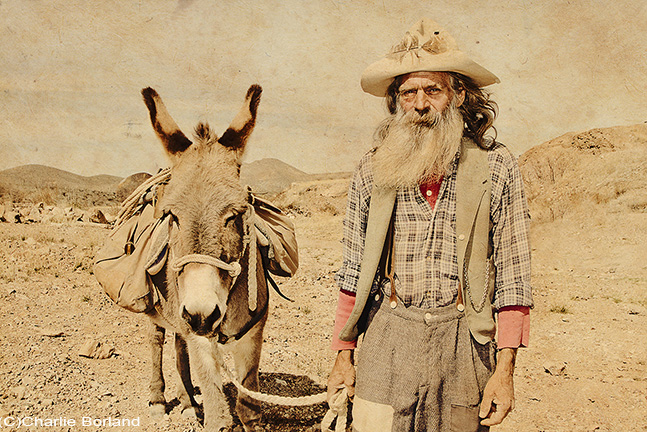Dramatically improve your flower photography by adding light from a wireless flash. If you photograph flowers, you can make them stand out by adding light from a wireless flash.
While it is not difficult to photograph flowers, like all outdoor nature photography, we are at the mercy of Mother Nature and that means we don’t always get the light we want. You can solve this problem by using a wireless off-camera flash. It can in many cases dramatically improve your photography.
When I know I am photographing wildflowers I will take my Canon 580EXII and the NPT-04 radio triggers and the Fotodiox mini lightbox to soften the light on flowers. Also, several light stands for multi-flash setups.
My strategy for lighting flowers is I want it to look REAL and not flashed because contrast looks really ugly. I usually use a 100mm macro lens for smaller flowers but today I am using a 28-70mm lens because these flowers are so big. I have set my aperture to f/5.6. and my ISO is 100.
The last thing is when you have a grouping of flowers instead this little mini lightbox won’t cover it. The solution is a larger lightbox like this 18×18 inch one. I am holding the lightbox over the flowers and the additional light brightened up these foreground flowers nicely. On this final photo I darkened the background by changing the shutter speed from 1 second to 1/4 second and that makes the foreground flowers stand out nicely.
I recently photographed my friend Kim and her husband and kids in the studio. This is the first image I processed of Kim herself.
 This is what could be called a white on white which is a subject that is very light in tone on a white background. This would be her blonde hair and white blouse on a white background. Here’s the lighting diagram:
This is what could be called a white on white which is a subject that is very light in tone on a white background. This would be her blonde hair and white blouse on a white background. Here’s the lighting diagram:
Recently, I wrote about stumbling upon the Lost Dutchman miner, of the legendary Lost Dutchman mine, while wandering the Arizona desert photographing and described how he posed for me in a photograph.
After that, I continued across Arizona and New Mexico searching for more great landscapes and flower displays when as luck would have it, I again stumbled on another well know western figure: U.S. Marshal Rooster Cogburn.
In case you don’t know who that is; he is the infamous Marshall who reportedly shot 64 bad guys. He is from Arkansas but his Marshall duties have taken him around the west hunting for the usual desperado’s.
His most well-known manhunt; was that of murderer Tom Chaney who had killed the father of Mattie Ross and was on the run. So Cogburn went after him hoping to capture and bring him back to Texas for trial.
As we drove from New Mexico into West Texas, we stopped in Sierra Blanca to gas-up and decided to get a drink. Having never been there, we found a small cantina and went on in. After 5 minutes I heard a loud ruckus and there was some fat old guy drunk at the bar.
After watching for a minute I realized who it was: Rooster Cogburn. I could not believe it but told my wife let’s just watch. For an hour he was there bellowing and boasting before sitting at the table next to us.
To make a long story short, we struck up a conversation and I eventually asked him if I could photograph him on the side of the cantina building. He grinned and agreed, but pulled out his 6-gun and said if the pictures were bad he’d shoot me.
I promised they would be very flattering.
So we went out back and I set up two flash units with wireless triggers to add some light on him. I purposely chose the shaded side of the building and then the flash units to add light rather than fight the sun with fill flash.
He was swaying a bit so I used a shutter speed of 1/125th at f/5.6 and hoped there would be no blur. I thought the picture looked pretty good and mailed him one to some address in Mexico. Not sure if he got it.
Flash is such a great tool for all photographers, indoors and out. While most of the imagery I shoot using flash is fairly close to the camera, there is occasionally a subject much further from the camera and flash where the light from the flash just does not get there.
Flashes all have a set range where they can send enough light for proper exposure, but due to the inverse square law, that light reaches a distance where the light falls off. Think or throwing a ball! For a while the ball travels at speed for a certain distance before beginning to drop as that speed slows down.
Keeping all this in mind is important when photographing. Just how far can the subject be before the light won’t reach? It varies on many factors such as how powerful the flash is. The more powerful the further light goes. A Canon 580EXII has a greater range than the
You love photography and want to photograph full time by launching a photography business. Maybe you are unemployed or wish to supplement your retirement income or simply wanting to earn money doing what you love.
For those with jobs you may not want to quit the day job until your business is launched and earning you an income and enough income allowing you can quit that day job. Maybe you are unemployed and if so you can get started right away but be careful if your financial resources are limited.
So how do you get started? I have compiled these ideas into the 12 most important steps I believe are crucial to finding success as a professional photographer in today’s markets.
This past spring I was enjoying quite a bit of time wandering and photographing the Arizona deserts and mountains. While down in the desert I was stunned when I came across this old miner in the desert with his donkey.
We started talking and I asked what he was doing down here in the middle of nowhere. He told me he was the Lost Dutchman Miner of the infamous Lost Dutchman mine. He continued by telling me that he was truly lost in his attempt to relocate his mine.
I replied that he was a long way from the Superstition Mountains, where history suggests the mine is located. He did not comment obviously fearing if he said anything I might start searching for the mine myself. This got me thinking that the mine might not be in the Superstitions after all.
He asked if I had anything to eat as all he had to eat for sometime was beans and hardtack. I happened to be carrying in my camera bag a crab salad sandwich from Subway and one of my favorite beers: McTarnahan’s from Portland Brewing, and it was still ice cold.
I told him I would give him the sandwich and beer if he posed for a picture and so he did not move as I grabbed this shot. I did use flash fill because the sun was high noon and created the shadows in the eyes.
 He scarfed down the sandwich and guzzled the beer (I don’t think he liked it. Never had a beer like that) then without saying a word, headed off into the sunset so to speak, in search of the Mother Lode. I grabbed my gear and went looking for the mine.
He scarfed down the sandwich and guzzled the beer (I don’t think he liked it. Never had a beer like that) then without saying a word, headed off into the sunset so to speak, in search of the Mother Lode. I grabbed my gear and went looking for the mine.
In Photoshop,
I love to tell stories with light and do it with stash-a-flash technique which includes hiding a flash in the scene so that it lights a part of the subject.
This image of a rock climber is in my new book: Outdoor Flash Photography and was taken right before a thunderstorm rolled in. You essentially hide the flash with a remote trigger and in a place that it lights your subject but nothing else.
I hid the flash to light the climber and it worked well but some light spilled elsewhere and I show in the book how to fix that as well as how to add light to other remote subjects when shooting outdoors or on an adventure.
Finally….my new eBook: Outdoor Flash Photography is published and available.
If you have a flash and wonder how to use it, or you wish to learn how to apply light, this eBook covers it all.
You’ll learn:
Click here to read more and order.